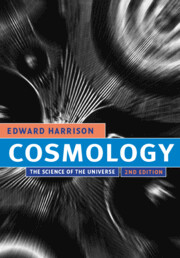Book contents
- Frontmatter
- Contents
- Preface
- Introduction
- PART I
- PART II
- 10 Curved space
- 11 Special relativity
- 12 General relativity
- 13 Black holes
- 14 Expansion of the universe
- 15 Redshifts
- 16 Newtonian cosmology
- 17 The cosmic box
- 18 The many universes
- 19 Observational cosmology
- PART III
- Appendix – Fundamental quantities
- Index
14 - Expansion of the universe
from PART II
Published online by Cambridge University Press: 05 June 2012
- Frontmatter
- Contents
- Preface
- Introduction
- PART I
- PART II
- 10 Curved space
- 11 Special relativity
- 12 General relativity
- 13 Black holes
- 14 Expansion of the universe
- 15 Redshifts
- 16 Newtonian cosmology
- 17 The cosmic box
- 18 The many universes
- 19 Observational cosmology
- PART III
- Appendix – Fundamental quantities
- Index
Summary
The theory of relativity brought the insight that space and time are not merely the stage on which the piece is produced, but are themselves actors playing an essential part in the plot.
Willem de Sitter, “The expanding universe” (1931)THE GREAT DISCOVERY
Doppler effect
From a historical viewpoint the Doppler effect paved the way to the discovery of the expanding universe. Nowadays we do not use the Doppler effect in cosmology, except in its classical Fizeau–Doppler form as a rough and ready guide. We examine the Doppler effect briefly and defer to Chapter 15 a more searching inquiry.
The spectrum of light from a luminous source contains bright andd ark narrow regions, as shown in Figure 14.1, that are the emission (bright) and absorption (dark) lines produced by atoms. When a luminous source such as a candle or a star moves away from an observer, all wavelengths of its emitted radiation, as seen by the observer, are increased. Its spectral lines are moved toward the longer wavelength (redder) end of the spectrum and it is said to have a redshift. This redshift is detected by comparing the spectrum of the luminous source with the spectrum of a similar source that is stationary relative to the observer. The source may move away from the observer, or the observer may move away from the source, and in either case the separating distance increases and there is an observed redshift.
- Type
- Chapter
- Information
- CosmologyThe Science of the Universe, pp. 270 - 301Publisher: Cambridge University PressPrint publication year: 2000

